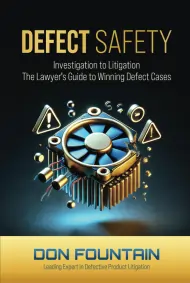The Week in Torts – Cases from the Week of May 15, 2020
“Can I Intervene, Pretty Please?”
FLORIDA LAW WEEKLY
VOLUME 45, NUMBER 19
CASES FROM THE WEEK May 15, 2020
EXCESS INSURER’S INTEREST IN DISTRIBUTING REMAINING INSURANCE PROCEEDS NOT SUPPORTIVE OF INTERVENTION, BECAUSE IT WAS NOT AN INTEREST IN THE LITIGATION, OR OF A “DIRECT AND IMMEDIATE” CHARACTER THAT THE INSURER WOULD GAIN OR LOSE BY OPERATION OF THE JUDGMENT—TWO-STEP ANALYSIS FOR RULING ON A MOTION TO INTERVENE.
Lexington Insurance Co. v. James, 45 Fla. L Weekly D1128 (Fla. 1st DCA May 8, 2020):
After a terrible accident where two deaths and other significant injuries occurred were caused by the reckless operation of a tractor-trailer, the company that employed the reckless driver filed a notice of bankruptcy. Almost a year later, the bankruptcy court granted this particular plaintiff’s motion for relief from the automatic stay, thereby allowing her to continue her wrongful death litigation.
Lexington, as the excess insurer, filed a motion to intervene asserting that because there were multiple claims and $10.00 remaining after a global mediation involving the $2 million dollars in insurance coverage, it had a need to intervene to distribute that $10.00.
The plaintiffs opposed intervention. They argued that the insurance company simply wanted to discharge its obligation to defend its insured, because it had to pay the insured’s attorney pursuant to the policy. They asserted that intervention would not aid judicial economy because the case would proceed to trial irrespective of whether the company paid the $10.00. They also asserted that the bankruptcy court’s order did not limit the plaintiff’s recovery to $10.00 (it simply required her to return to the bankruptcy court with regard to the defendant upon entry of judgment).
The trial court denied the motion, noting that it was not for it to decide what Lexington’s rights and duties were under the policy, and allowing it to intervene would alter the path of the case.
In ruling on a motion to intervene, a trial court must first determine if the interest asserted is appropriate to support intervention. If the answer is yes, then the court must consider a number of factors including the derivation of the interest, any pertinent contractual language, the size of the interest, the potential for conflicts or new issues, and any other relevant circumstances, as part of exercising its discretion.
After that, the court must then determine the parameters of the intervention, which should be limited to the extent necessary to protect the interest of all parties. The interest which will entitle a person to intervene must be a matter in the litigation, and be of such direct and immediate character that the intervenor will either gain or lose by the direct legal operation of the effect of the judgment; i.e., the interest must be that created by a claim to the demand in suit, or a claim lien or something which is the subject of the litigation. The interest cannot be “contingent”; it must be direct and immediate.
In this case, the trial court examined whether the insurance company’s asserted interest was appropriate for intervention and properly concluded that it was not. issue of what the insurance company’s rights and duties were under the policy was not before it, and intervention was not the proper way to determine that.
The interest of distributing remaining insurance proceeds was not an appropriate matter to support intervention because it was not an interest in the matter of litigation and not of such a direct and immediate character that the insurance company would gain or lose by the direct operation of the judgment. The insurer’s interest was improperly attempting to inject a new issue in the case, i.e., whether it had the right to distribute the remaining insurance proceeds and thereby cease its obligations to defend its insured.
Nor would the insurance company gain or lose by the direct operation of the judgment, because as the insurance company itself argued at the motion hearing, no matter what happened, the insurer’s involvement was capped at $10.00. Thus, any judgment entered would have no effect on the insurance company; it was only the continuance of the proceedings that would affect it, because it was paying for the defense pursuant to its policy agreement.
As to the argument for judicial economy, the insurance company made no showing, only demonstrating that intervention would assist it in saving on litigation costs.


